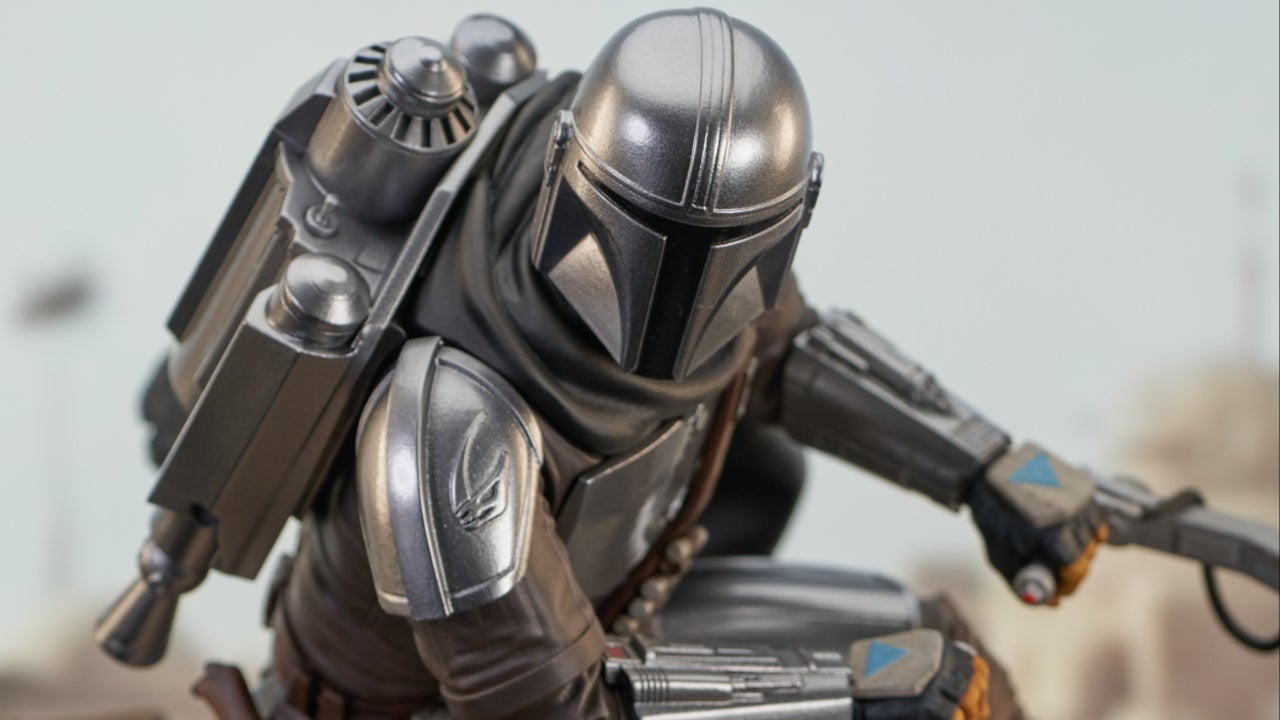Game controllers are hardly the simple pieces of molded plastic they once were. More and more accessory makers are putting out high-end controllers that load up on buttons, advanced joysticks, customizable settings, and extra features. It’s that push that got us the $179 Xbox Elite Wireless Series 2 controller among others. Not shy of introducing some wild accessories of its own, Turtle Beach just stepped up and said, “hold my drink,” with the new Stealth Ultra controller.
If there’s a feature you’ve been looking for in a PC or Xbox controller, there’s a good chance Turtle Beach stuck it in here. It offers wired and dongle-based wireless connectivity as well as Bluetooth, hall-effect joysticks, a built-in settings display — you name it. Of course, all these extras add to the price, and at $199, the Turtle Beach Stealth Ultra costs nearly as much as a console, like the Xbox Series S. But for those looking to make the most of their play with a controller that can hold up and enhance their competitive edge, the Stealth Ultra might be it.
Turtle Beach Stealth Ultra – Design and Features
Straight from its packaging, the Turtle Beach Stealth Ultra immediately announces it’s coming after the Xbox Elite Wireless controller. It comes bundled with a sturdy carrying case that, much like the first-party alternative, has a slot in the top to let a charging cable sneak through. This plugs into a little magnetic dock with a series of pogo pins that allows the controller to charge just by setting it back into its case. It was a clever move by Microsoft with its case, and it’s no less convenient here.
Turtle Beach’s charging dock also includes a USB-A port where the controller’s wireless dongle can live, effectively making the case and dock an all-in-one hub for charging, storage, and wireless connectivity. The braided USB A-to-C cable that comes with the controller is long enough that it’s easy to find a home for the case away from the console or PC while still keeping it plugged in. The case also has a little zippered pocket for holding onto a set of thumbstick caps that can change the contour, height, and texture of the sticks.

The Turtle Beach Stealth Ultra controller itself is quite a statement. It also hews close to the design language of the Elite Series 2 controller with a black and silver styling that’s at once ostentatious and subdued. Powering the controller up, any sense of subtlety is thrown out the window. Wrapping around the controlling grips, a ring of LED lighting sets the controller aglow with some flare. A color display also lights up in the center of the controller, providing access to settings and profile menus as well as curious extras, like notifications from a paired smartphone.
The controller has an extra “+” button that jumps it into the on-screen settings, where various buttons on the controller handle navigation. Sometimes, which button does what is indicated to help with navigation, other times it’s much less clear. It took quite a lot of guessing and checking to figure out how to effectively get around and change all the settings. The accompanying Control Center 2 app can adjust some settings on the controller via a paired smartphone, but I found the connection even more tedious to establish, and the settings weren’t simpler to adjust through the app than on the controller.

While the layout of the Turtle Beach Stealth Ultra is mostly standard for Xbox, it has a few points of divergence. The D-Pad, for one, has a concave design. The underside of the controller also has two buttons on each side just about where the tip of the middle finger will fall for many users. In this position, it’s easy to squeeze the middle finger to hit one of the buttons or press with the side of the finger to hit the other. All of these buttons have clicky micro-switches that don’t have the mushy feel of a lot of other controllers’ buttons, including the Xbox Elite Series 2 controller’s.
The analog triggers are an exception. They don’t get the micro-switches, but they instead have trigger locks that can turn them into short-travel, binary inputs. This gives you the option of nuanced input or instant activation with a short pull. Turtle Beach has also gone a step above with its joysticks, opting for hall effect sensors that should be less prone to drift and diminishing accuracy over time.

There’s a headset jack on the front edge of the controller. Turtle Beach conveniently has quick options for adjusting volume right on the controller’s display, even offering different sound profiles and game-chat balance adjustments.
Turtle Beach Stealth Ultra – Software
The controller connects to the Command Center 2 app on smartphones, which provides access to different profiles and the option to create more custom profiles. Each profile can have different button maps for the four buttons on the underside of the controller, different joystick response curves and dead zones, different dead zones for the triggers, and custom audio, lighting, and vibration levels. The app also provides control over the power mode, sleep timer, and screen brightness while charging. The app is fairly basic and not very elegantly laid out, so it’s a little tedious to go through. It can also be a bit buggy about establishing a link to the controller.
Turtle Beach Stealth Ultra – Gaming
The Turtle Beach Stealth Ultra set a high bar with its $200 price tag, but in many ways it clears that bar. Its wireless dongle connection proved exceptionally reliable in my testing, always keeping my controls registered on a connected PC even in the absurdly dense RF environment I call my home office. Better still are the controls.
Where the Xbox Elite Series 2 controller charged a premium but delivered some truly, disappointingly base-level controls, the Turtle Beach Stealth Ultra properly steps up its controls. The clicky micro-switches underneath nearly every button on the controller are snappy and wonderfully responsive. There’s a little, soft mush to the ABXY and D-Pad buttons, but just under that is a crisp, consistent click. There’s just enough resistance to prevent accidental presses, but otherwise a reliable feel that never misses a beat. I sunk major hours into Dead Cells, where hammering away at attacks and perfect timing are crucial, and the Stealth Ultra never let me down. Precision platforming and nimble acrobatics were as easy as doling out violence to the game’s many enemies.

Slipping through the void in Solar Ash, the joysticks provided reliable and nuanced control. This was helpful for navigating the progressively difficult platforming required to defeat each boss in the game. Analog triggers are fairly standard for gaming controllers, as they provide nuance useful in many games, like racing games where you may not want to always put the pedal to the metal. Having a toggle to quickly switch the triggers to serve as short-travel, binary inputs helps in a lot of other games, though. In Solar Ash, it meant I could use my dash quicker. In Dead Cells, it meant activating a skill quicker. In just about any FPS game, it means aiming down sights and firing in less time. Since time-to-kill is such a crucial stat in shooters, every millisecond you can shave off helps.
Though the hall effect sensors of the joysticks may offer long-term reliability, the rings around the joysticks could prove problematic in the long term. I noted some negative feedback from customers on Amazon regarding these rings, saying they get rough and lose their near-frictionless quality rather quickly. With many hours of Dead Cells hitting the left thumbstick almost exclusively, I’m able to confirm that the ring around the joystick can get a bit rough, adding friction compared to the lesser-used stick. Some of this seems attributable to wear, but more of it appears to stem from build-up of grime or dust. Wiping this away significantly boosted the smoothness of the joystick rotating around the ring, with only a little roughness lingering. That said, in the midst of gaming, I can’t say I ever noticed the extra friction.

In its effort to be the best, the Turtle Beach Stealth Ultra may have done too much, though. The RGB lighting around the grips may be a neat effect, but it’s effectively blotted out when the controller is actually held. RGB lighting has a heavy impact on battery life for wireless devices, too, especially combined with the small display on the controller. Though Turtle Beach advertises a 30-hour battery life, I found it struggling to reach 10 hours with all the bells and whistles active. To see that longer lifespan, you’ll likely have to deactivate the lights, dim the display, and put on a short sleep timer. Fortunately, the charging dock makes it easy to always have it topped up after gaming.
Turtle Beach also offers its own sound enhancements for connected headphones. I’ve never been impressed by its “Superhuman Hearing” feature, as it shifts the game's natural sound to try boosting footsteps and gunshots but is dependent on what a game actually makes footsteps and gunshots sound like, and it can take nuance out of the rest of the audio. The ability to pump out clear sound to a decent pair of headphones is still better to have than not, and effectively lets you use wired headphones like wireless ones away from your Xbox or PC.







